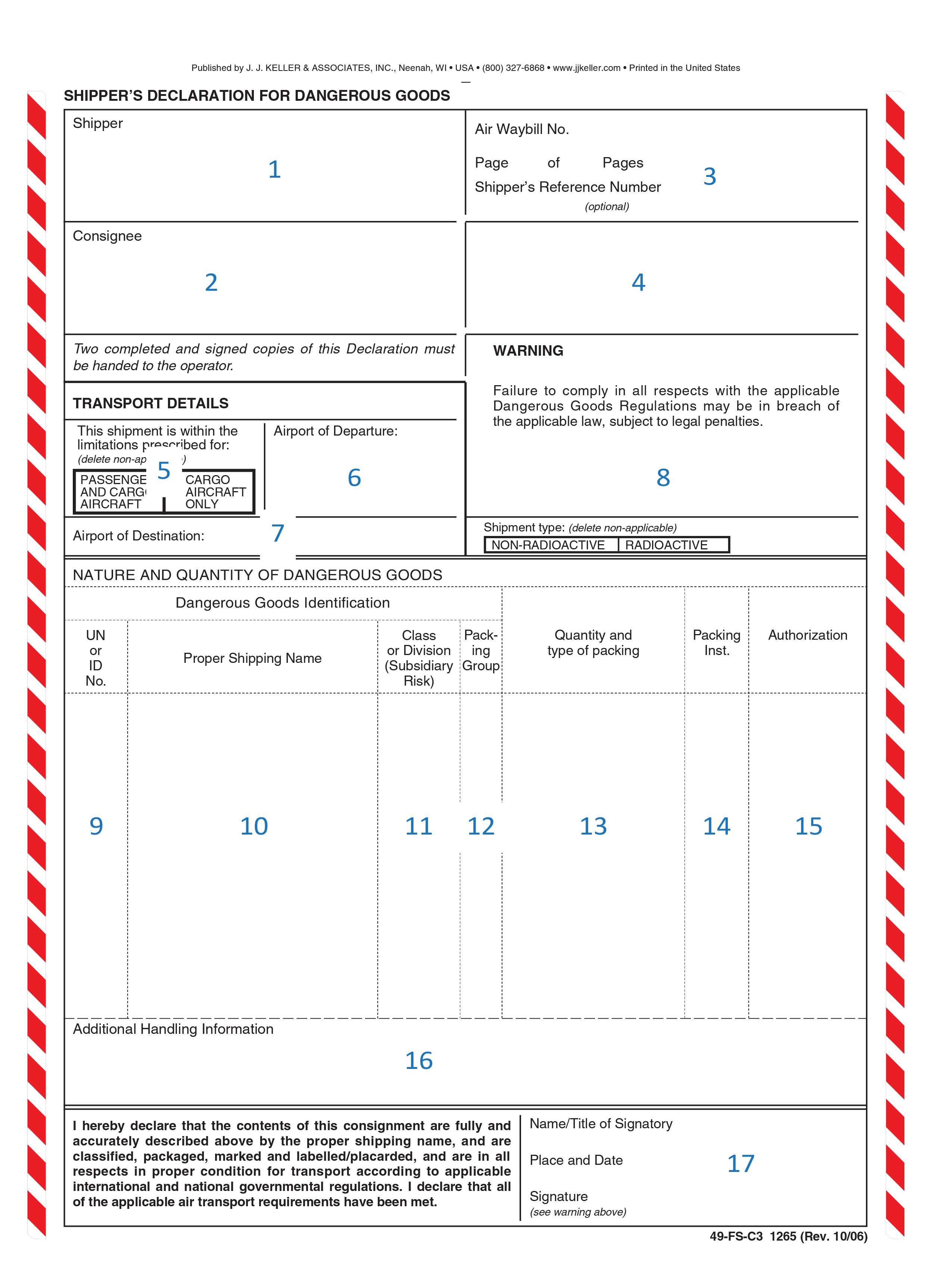How to complete a shipper’s declaration for dangerous goods
A Shipper’s Declaration Form must be completed by the shipper for each consignment of dangerous goods by air. See the following for instructions on how to complete the form.

1 – Shipper: Enter the full name and address of the shipper.
2 – Consignee: Enter the full name and address of the consignee (the recipient of the shipment).
3 – Air Waybill Number: For air cargo shipments, enter the air waybill number. Enter the total number of pages, as well as the current page number (e.g., Page 1 of 1). The reference number (for the shipper’s internal organizational use only) is optional.
4 – Optional: Add the shipper’s company logo and address.
5 – Transport Details: Strike through whichever option does NOT apply to this shipment. NOTE: Passenger aircraft limits for dangerous goods are more restrictive.
6 - Airport of Departure: Enter the full name of the airport and city where the goods are shipping from. The three-letter airport code is not sufficient. This information may be completed by the agent or airline.
7 - Airport of Destination: Enter the full name and city of the airport where the goods are shipping to. The three-letter airport code is not sufficient. This information may be completed by the agent or airline.
8 – Shipment Type: Strike through whichever option does NOT apply to this shipment. (Radioactive/Non-Radioactive)
9 – UN or ID Number: Enter the UN or ID number for each product from the Dangerous Goods List (Column A). Most will start with UN.
10 – Proper Shipping Name: Enter the Proper Shipping Name for each product from the Dangerous Goods List (Column B).
11 – Class or Division (Subsidiary Risk): Enter the Class or Division of the product, along with any subsidiary risk (in parentheses), from the Dangerous Goods List (Column C).
12 – Packing Group: Enter the Packing Group, if applicable, from the Dangerous Goods List. Not all products will have a packing group. The Packing Group will be a Roman numeral of I, II, or III.
13 – Quantity and type of packaging: Each material of the same type and quantity should be listed separately. List the total number of packages and the type of packaging, along with the net quantity in weight or volume of each package, followed by the total weight.
14 – Packing Instructions: The IATA Packing Instruction number must be noted in this column. Refer to the Dangerous Goods Regulations for specific information on the material being shipped.
15 – Authorizations: This can be left blank unless any special provisions apply (e.g., Ltd. Qty.)
16 – Additional Handling Information: Enter any specific handling information here. Also, for goods coming from, to or through the U.S., an emergency response telephone number must be included (except for limited quantities).
17 – Name/Title of Signatory: The person who signs the Dangerous Goods form (the signatory) must be an employee with proper, current training in dangerous goods and/or hazmat.
- Print the name of the person who will be signing. (Title is optional.)
- Enter the date signed, either in full or in one of the following formats: DD/MM/YYYY; DD.MM.YYYY (Place of signing is optional.)
- The signatory should sign where indicated.
